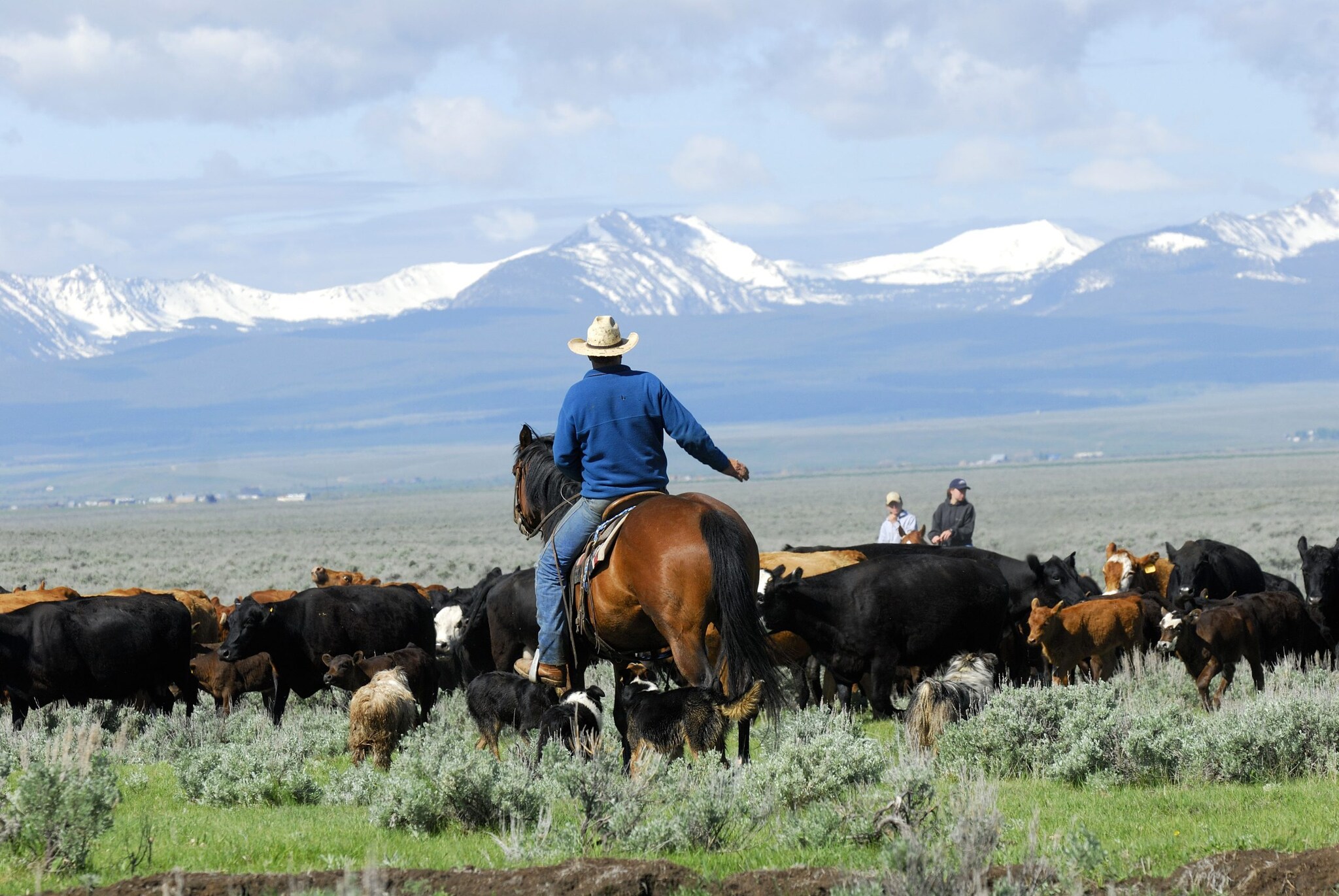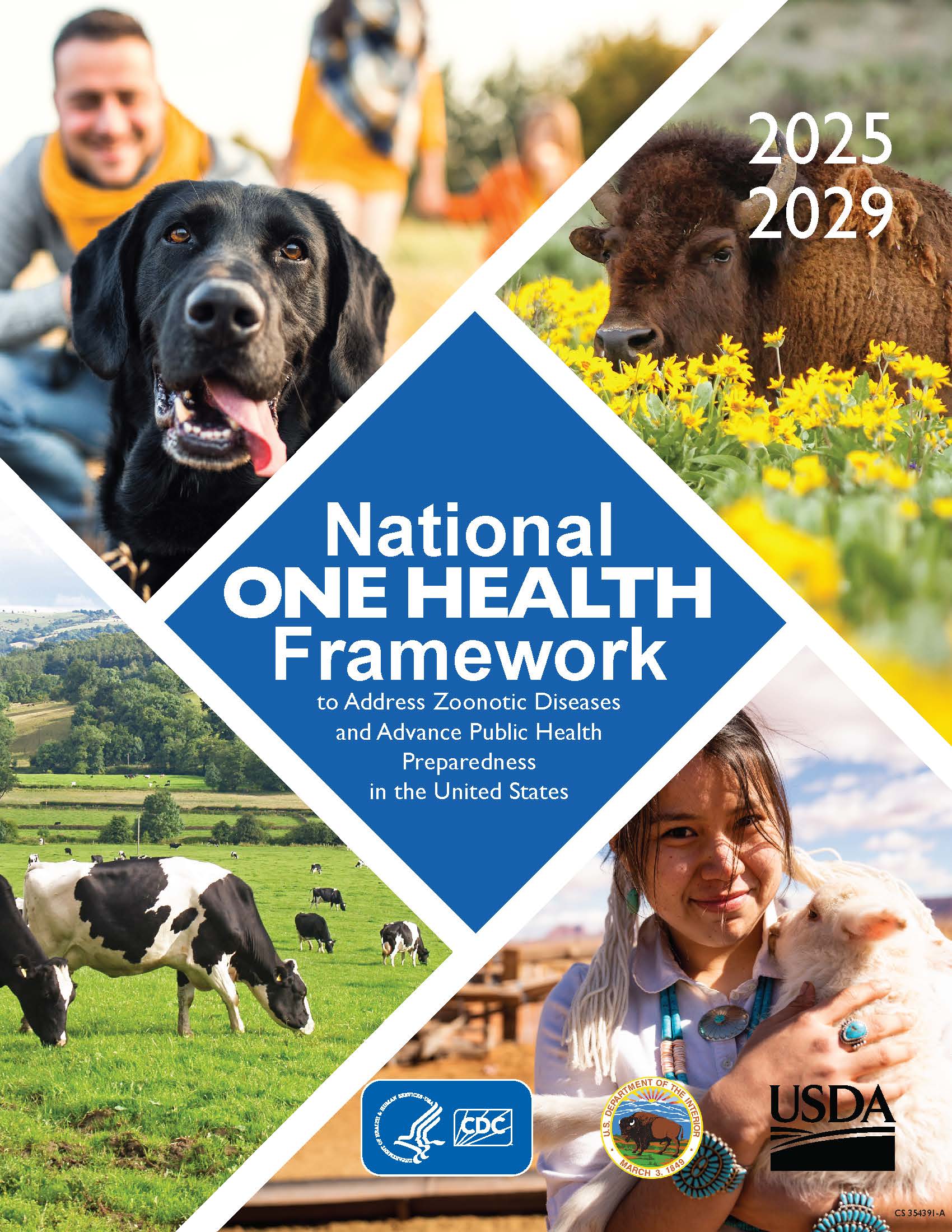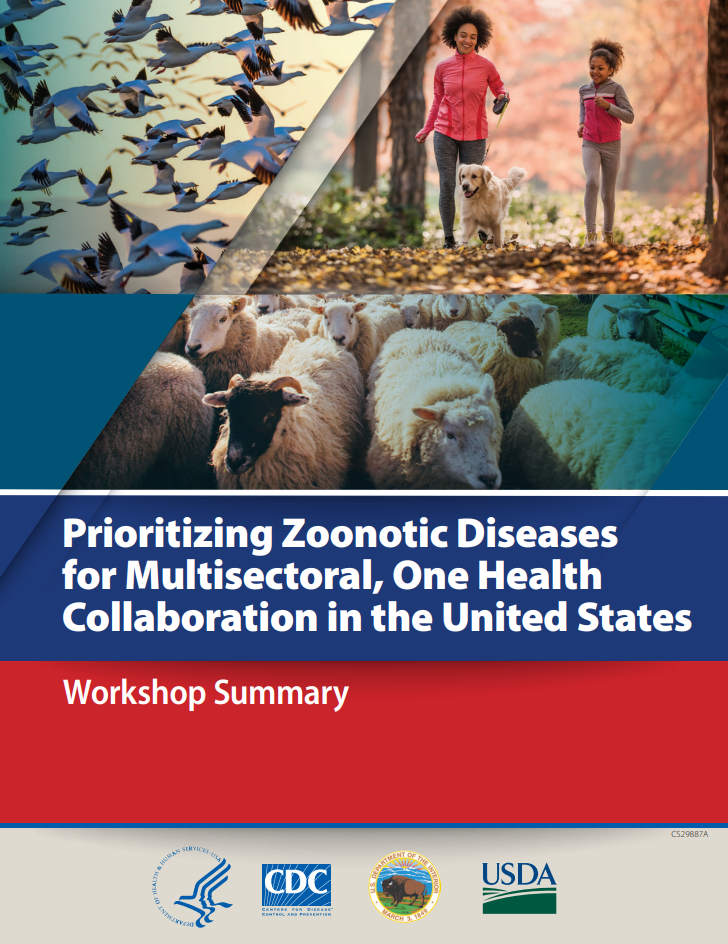What to know
- CDC works closely with the US Department of Agriculture (USDA), the Department of the Interior (DOI), and many other federal agencies to exchange information and coordinate One Health activities across the United States government.
- The NOHF-Zoonoses will guide collaborative efforts across the United States government for the next 5 years, helping federal agencies work together to prevent and control zoonotic diseases and prepare for future health threats, protecting health for all.

Advancing One Health in the United States
National One Health Framework to Address Zoonotic Diseases and Advance Public Health Preparedness in the U.S.
In both the 2021 House Appropriations Committee Report and the 2023 Consolidated Appropriations Act, Congress directed CDC to collaborate with USDA, DOI, and other federal agencies partners to create a National One Health Framework to Address Zoonotic Diseases and Advance Public Health Preparedness in the United States (NOHF-Zoonoses).
- The NOHF-Zoonoses will inform One Health collaboration across the U.S. government for the next 5 years, describing a common vision, mission, and goals for key federal partners involved in implementing the One Health approach to protect people, animals, and our shared environment from zoonotic diseases and other One Health threats within the United States.
- The framework establishes goals and objectives to strengthen coordinated federal activities in the United States and better prepare for the next potential threat.
U.S. One Health Coordination Unit
The Act also directed CDC to collaborate with interagency partners on the development of a One Health coordination mechanism at the federal level to strengthen One Health collaboration related to prevention, detection, control, and response for zoonotic diseases and related One Health work across the federal government. As a result of this directive, the U.S. One Health Coordination Unit (U.S. OHCU) was launched in January 2024. The U.S. OHCU is built on shared interagency leadership from CDC, Department of the Interior (DOI) and U.S. Department of Agriculture (USDA) and brings together 24 agencies to enhance collaboration that benefits human, animal, plants and environment health through activities such as promoting health, enhancing health-sustaining resources, emergency preparedness, and the prevention, detection, and response to zoonotic diseases.
Addressing priority zoonotic diseases of national concern
In 2017, CDC, USDA, and DOI organized a One Health Zoonotic Disease Prioritization (OHZDP) workshop to further joint efforts to address zoonotic disease challenges in the United States. Participants in the workshop identified eight zoonotic diseases of greatest national concern:
- Zoonotic influenza
- Salmonellosis
- West Nile
- Plague
- Emerging coronaviruses (such as SARS and MERS, and as of 2020, COVID-19)
- Rabies
- Brucellosis
- Lyme disease
After this workshop, CDC created the One Health Federal Interagency Network (OH-FIN) to bring together experts from key federal agencies representing multiple departments to exchange information, updates, and opportunities for collaboration in support of One Health across the federal government.
Responding to COVID-19 with the One Health Approach
The COVID-19 pandemic led to the creation of new One Health coordination activities across the US government. For example, CDC created and coordinates the One Health Federal Interagency Coordination Committee (OH-FICC), formerly known as the One Health Federal Interagency COVID-19 Coordination group, which brings together public health, animal health, and environment officials from more than 20 federal agencies to collaborate and exchange information on One Health issues. We were able to rapidly stand up this One Health coordination by bringing in experts from the OH-FIN. The original focus was on COVID-19 but expanded to other emerging health threats and public health emergencies like mpox, Ebola, and avian influenza in 2022.
During the COVID-19 pandemic, interagency working groups were formed and members contributed to developing guidance, messaging, and research at the human-animal-environment interface related to:
- companion animals
- wildlife and zoo animals
- production animals like farmed mink;
- environmental issues; and
- diagnostics and testing in animals.
CDC also coordinated regular calls with OH-FICC members, state, tribal, local and territorial (STLT), and nongovernmental partners for information sharing and collaboration. These calls connect a wide range of partners so they can share updates and collaborate on a variety of One Health issues.
Federal One Health partners in the OH-FICC also investigated spread of SARS-CoV-2 between people and animals, through the development and implementation of a standardized One Health epidemiological investigation toolkit and surveillance system that has been adopted nationwide. Combining surveillance data with genomic information from both human and animal samples through One Health investigations of SARS-CoV-2 infections in people and animals have helped improve our understanding of how COVID-19 affects different animal species, virus transmission, the potential for variant emergence in people and animals, and the potential role of animals in spreading the virus.
CDC One Health experts have conducted or assisted in investigations of SARS-CoV-2 cases in people and companion animals, farmed mink, wild animals, and captive animals in zoos, along with our state and local public health and animal health partners, as well as federal partners such as USDA and DOI.
Subscribe to our newsletter
Sign up for our email newsletter below.

